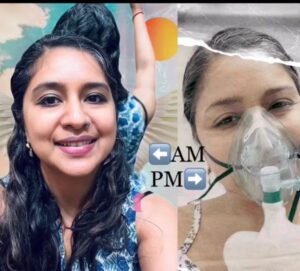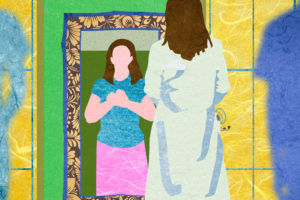As health care workers, we spend most days in hospitals, clinics, ambulances, and the like — places that are concrete containers for pain and human suffering. And we are bound to be affected by what we see, even if it isn’t apparent. Most people do not witness acute and extreme suffering on a daily basis. Between a comfortable home, car, school, grocery store or office, there is little opportunity to stare into the face of misery on a daily basis.
Health care workers in acute care settings, rescue workers in conflict zones or areas affected by natural disaster, soldiers at war and firefighters all witness extreme human conditions routinely. They find a way to cope so they can do their job well.
What is the cost of this stoic behavior that we incorrectly term professionalism? When the system lacks checkpoints to assess the impact of our work on our health, chronic and deep-rooted suffering results. When health care workers, soldiers or rescue workers face a personal calamity, life unravels quickly.
Residents may often have multiple cups of coffee or Red Bull to stay awake. Members of a medical team involved in the bloody resuscitation of a trauma patient who expires may find solace in a couple of drinks after work. What starts off as a coping mechanism may lead to serious health issues later on. The nurse who abuses opiates, the functioning alcoholic physician, or the trainee with an eating disorder are all silently battling addiction and mental illness. Dealing with extreme human suffering can unmask underlying health issues in the provider.
Exposure to human tragedy is disconcerting. Whether it is on the news or when we encounter a personal tragedy, it takes a toll. Then why are we complacent when it directly impacts front line providers? The ones we rely on to help us when tragedy, illness or injury comes knocking at our doorstep?
We all face struggles. Some we seek help for, some we overcome, and then there are issues we live in denial with. It is time to take stock of our inner workings before we take on the pain of others. Yes, we can meditate, exercise regularly, and make sure our diet is healthy. We also need better screening to ensure we get the help we need before embarking on the demanding job of being a health care professional. We need access to professionals in our workplace that we can consult when distressed.
Sometimes, it may be that one simply needs a few days off to rest, sleep, and spend time with loved ones. Other times, it may be that one needs serious professional help for an underlying condition unmasked by our experiences at work.
It is not enough to let the initiative come solely from the affected health care professionals. It is necessary for a process to be put in place that allows for diligent evaluation of all health care workers with ready assistance, without punitive consequences when there is a concern.
As health care workers, we have become masters of masquerades. We know how to mask our own pain to serve others effectively. We are well aware of the consequence, socially and professionally, if we bring up our health issues. We know the stigma attached to mental illness and addiction. Health care professionals are also part of the fabric woven into a society that chooses to empathize with what is obvious and tangible. Cancer, fractures, and physical disability often evoke feelings of sympathy, concern, and care. Conversely, schizophrenia, depression, and drug abuse often threaten to blame the individual, ostracize and isolate the person suffering.
Burnout is thought to be preventable by the individual. Yoga and meditation improve the general quality of life. However, a lasting solution can work only by addressing the root cause, which is the culture of medicine itself.
When a resident orders an antibiotic, that order is reviewed by the nurse, often the infectious diseases doctor and the pharmacist. Three different checkpoints — this is only one example of system checks to ensure patient safety. What about health care worker safety?
Self-care is wellness practiced before it is too late. Burnout, abuse, addiction, mental and physical illness result due to unchecked warning signs. It is tragic when a person suffering shows up to work to care for others. Very often, this is accomplished by using unhealthy coping mechanisms to get through the day.
This compromises patient safety. Burnout, physician suicide, and addiction amongst health care workers have reached epidemic proportions. The burden of electronic medical records and time spent away from patients are also contributing factors. The immediate concern, however, is the health and wellness of health care workers. Without which, other issues cannot be tackled effectively.
We are quick to reprimand a doctor when a medical error is detected. Yet, we ignore the sleep deficit that is accumulated or any ongoing personal issues. The emergence of wellness committees and surveys to assess burnout are encouraging. But, we also need effective, measurable tools to ensure ongoing wellness. The health of health care workers cannot be restricted to a yearly visit to the employee health department.
Collectively, we can solve this. Awareness is the first step. We do what we do because we are excellent at problem-solving. We are known to skip meals, forego sleep, take multiple tests, and persevere relentlessly. If we can develop vaccines, cure infections, and improve cancer survival, then we can definitely help ourselves. Similar to patient care, we need three steps to ensure care for the caregiver: Prevention, care for those afflicted, and follow-up to monitor for relapse.
We are talking about highly skilled, motivated, and conscientious individuals who have chosen the difficult yet immensely gratifying path of being a health care professional. We study rigorously, train mercilessly, and work tirelessly to make society healthier. It is time to consider the health of health care workers. Let’s start by making wellness and self-care in health care mandatory. Heal the healer.
Sonali Mantoo is a critical care physician.
Article published originally in – KevinMD.com



